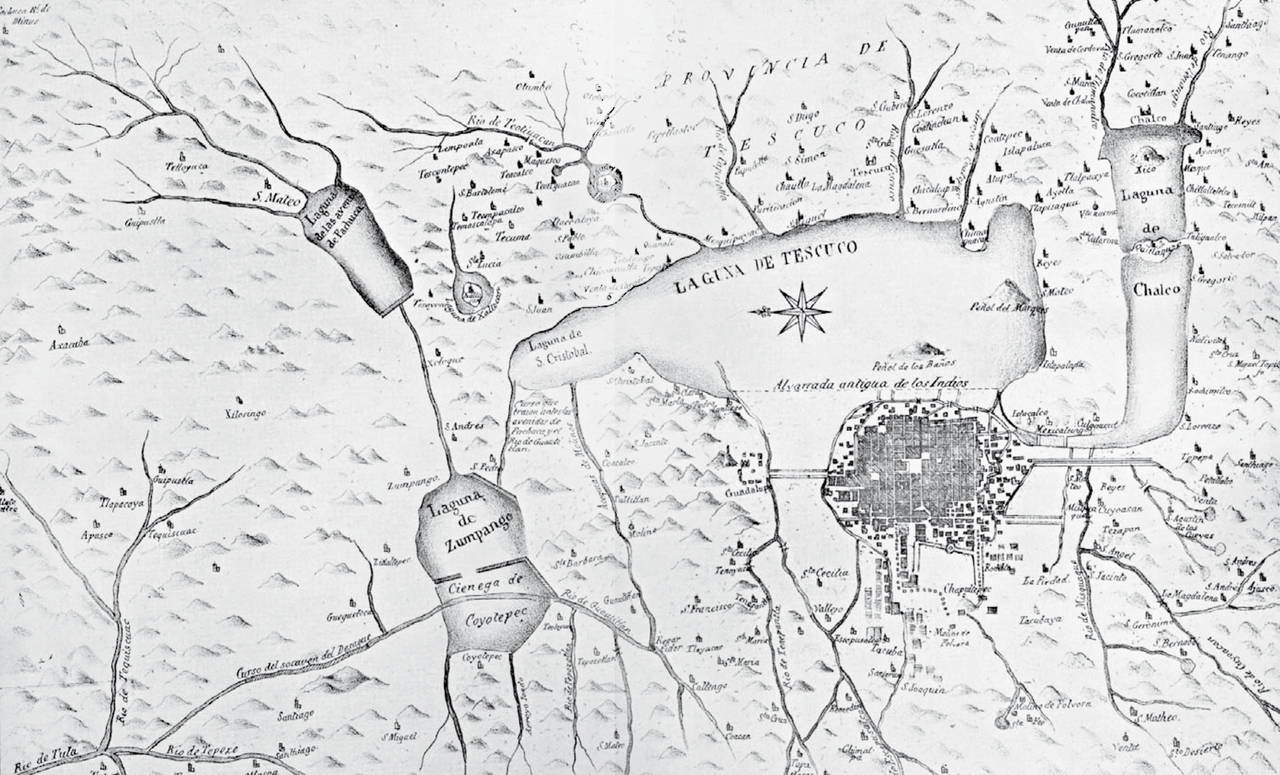Mexico City is a dusty city. Or, better, Mexico City is a windy and sometimes dry city and, therefore, a dusty city. Dust, in Mexico, is an index – in Charles Senders Peirce sense, i.e, that there is a direct physical connection between the sign and the signified – of the geophysical transformations of its territory. From its foundation as Tenochtitlan in 1325 in the middle of one of a system of five lakes, to the actual extension of an almost 20 millions inhabitants Megalopolis, with its water shortage and sewage disposal crisis, the handling of water and the occupation of the land with series of urban grids have been some of the city’s main issues, translated in many cartographical presentations.

It was Claudius Ptolemaeus in the second century of our era, that established the difference between Geography and Chorography in relation to their specificity. Chorography derives from the greek choros or chora: a limited, defined space, ready to be occupied. Chora designates something different than the emptiness of modern space; it is the container or potential receptacle of that which can take place in it: a space of potentiality. According to Ptolemy, Chorography has to do with the description of the nature of particular regions – or, regional particularities. While Geography is quantitative and has to do with the surface of the earth in a generic way, therefore not requiring any particular graphic skill – he says that a geographical description can be made “using simple lines and notes” that show “general positions and definitions,” or, as the geographer Gunnar Olsson puts it, “geography is most properly defined as geometry with names”–, Chorography looks for the qualities of definite zones of that same surface, being regional or local, and trying to understand their specificity. Maybe we could say, translating Ptolemy to some kind of deleuzian terminology, that while Geography looks for differences in degree – quantitative differences of height and distance –, Chorography looks for difference in nature – particular or local qualitative differences.
As part of an intended ”Prospective Cartography”, this series of maps and re-drawings of maps – what could be called mappings of maps – shows part of that story of regional particularities of Mexico City. In this maps are depicted not only the geographical changes of a territory or the physical ones of the city, but it is also recorded the way in which the city has been imagined both in its actual reality and its potentiality. We find different regimes of representations: from the ingenious and ingenuous aerial view of the city, to plans that understand the city as part of a system of towns or a bigger regional system. Some try to explain and some just to show to the stranger eye the radical newness of this territory in a way that some thought transformed this city into a model. But every one at its own level works, at least in part – as american forester and planner Benton MacKaye wrote in his 1928 “The New Exploration”–, by making potentialities visible, underlying their prospective nature. Again it was Charles Senders Peirce who wrote that “the experience of the world we live in renders the map something more than a mere icon and confers it the added characters of an index” – a direct physical connection between sign and signified, between the plan and the world. But we can certainly also say that it is precisely for this direct physical connection of the plan and territory it charts, that the experience of maps renders the world we live what it really is: both sensual and meaningful, actual and potential. As maybe every other map, these ones are crossing points – or better, crossing planes –, to quote once more Gunnar Olsson, between the mind of the mapper and the body of the explorer.
Alejandro Hernández Gálvez is an architect. He has been finalist in the Zocalo and Jose Vasconcelos Library Competition and winner, with Salvador Arroyo and Juan Carlos Tello of Centro, Design and Film School Competition, and with Fernanda Canales, Jose Castillo and Saidee Springall of the Guadalajara Performing Arts Center Competition. He has published in several magazines and books. He teaches a theory seminar and a design studio at the Iberoamericana University. Currently he is a fellow of the Sistema Nacional de Creadores





















